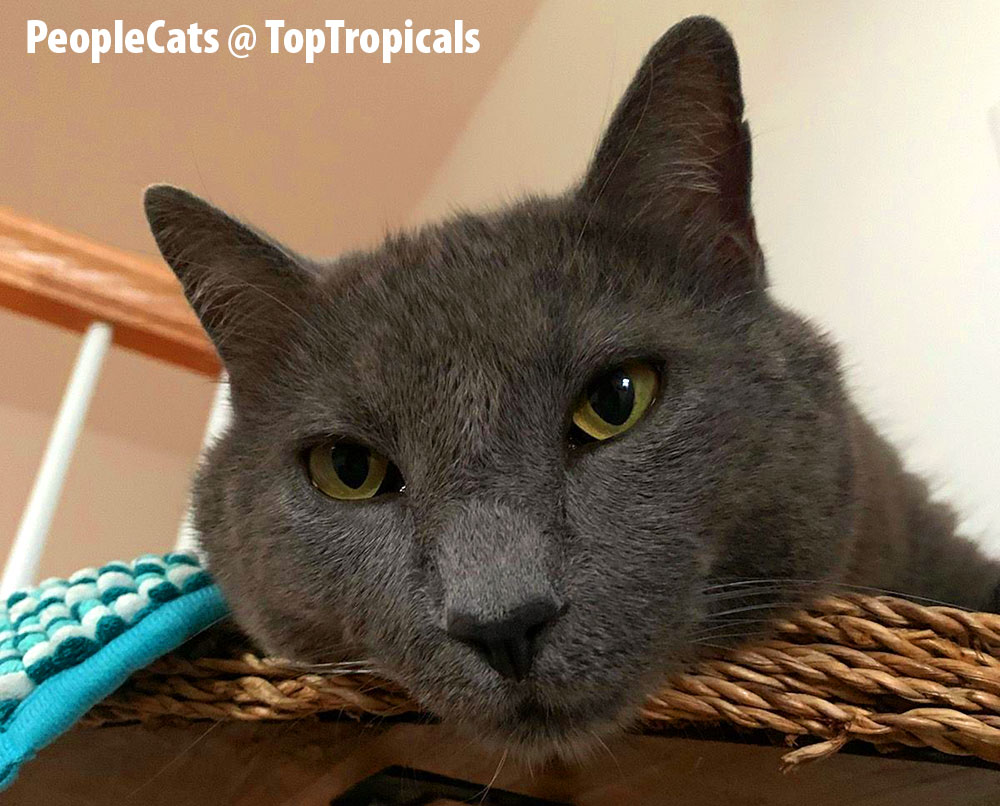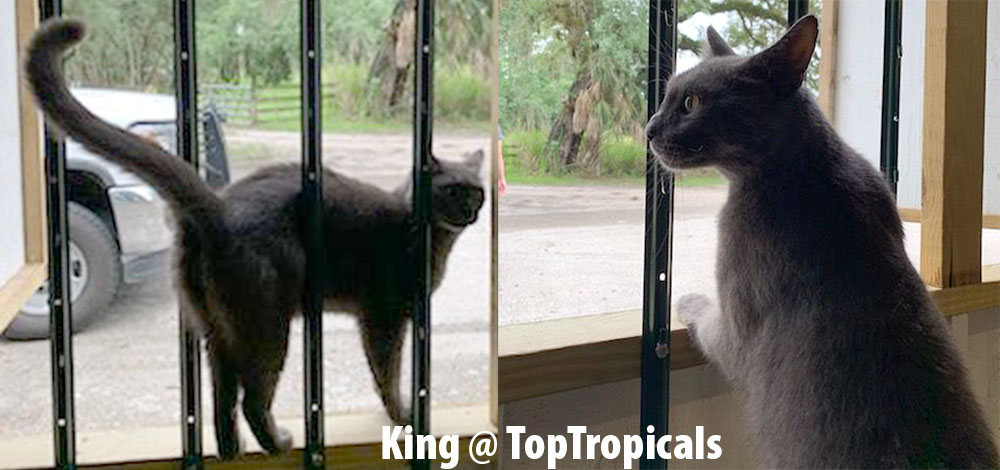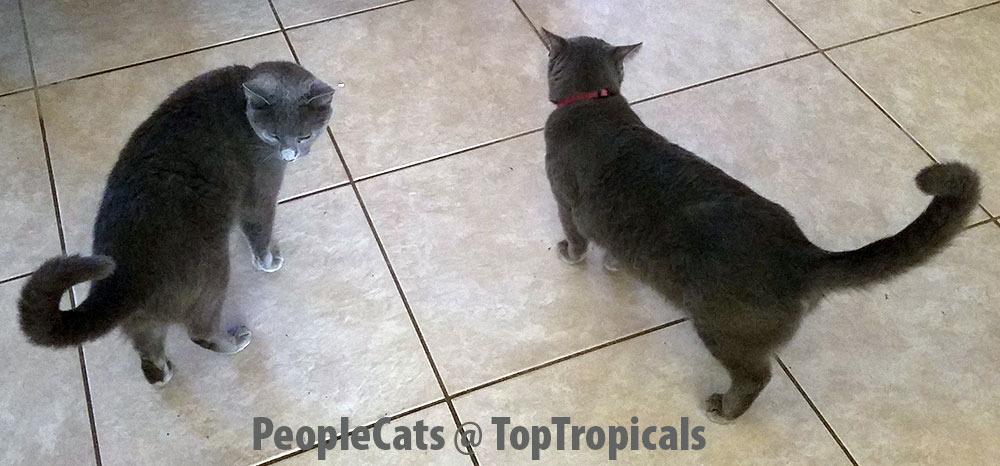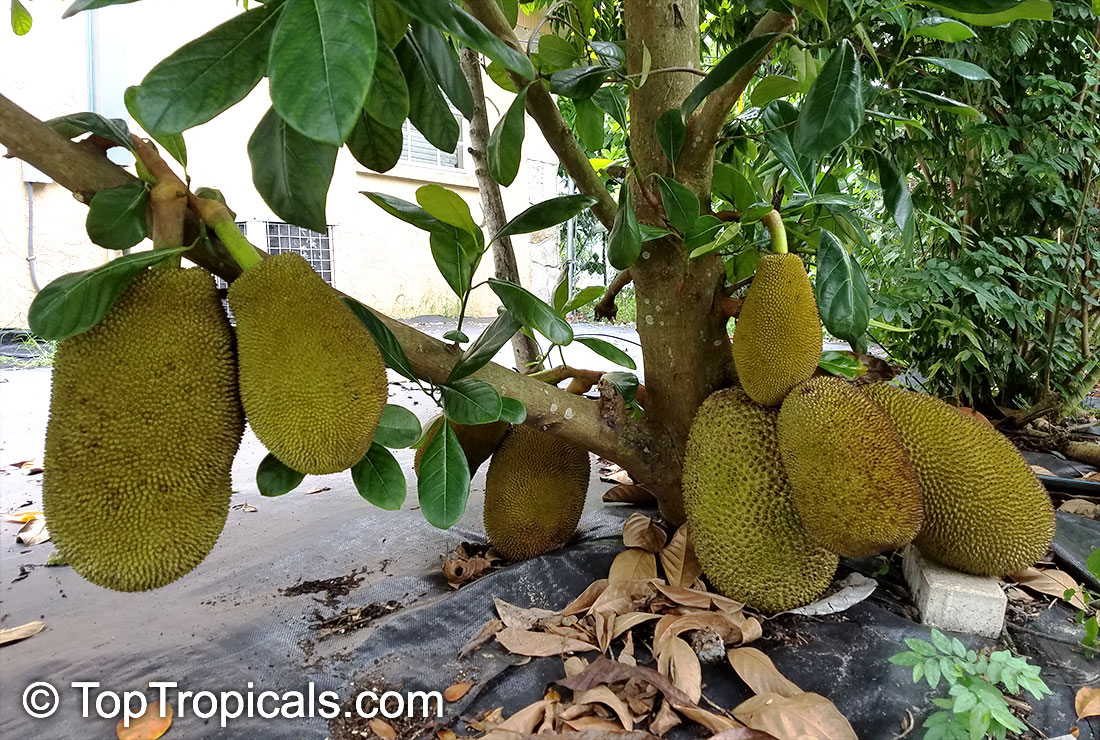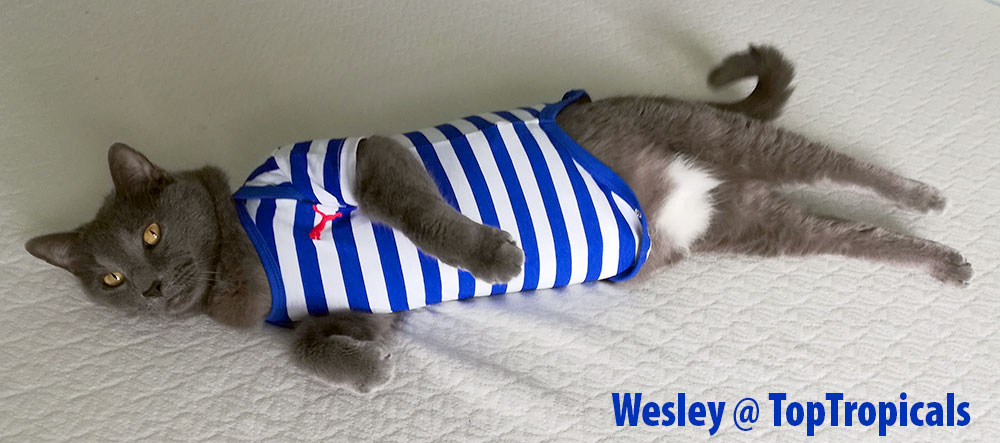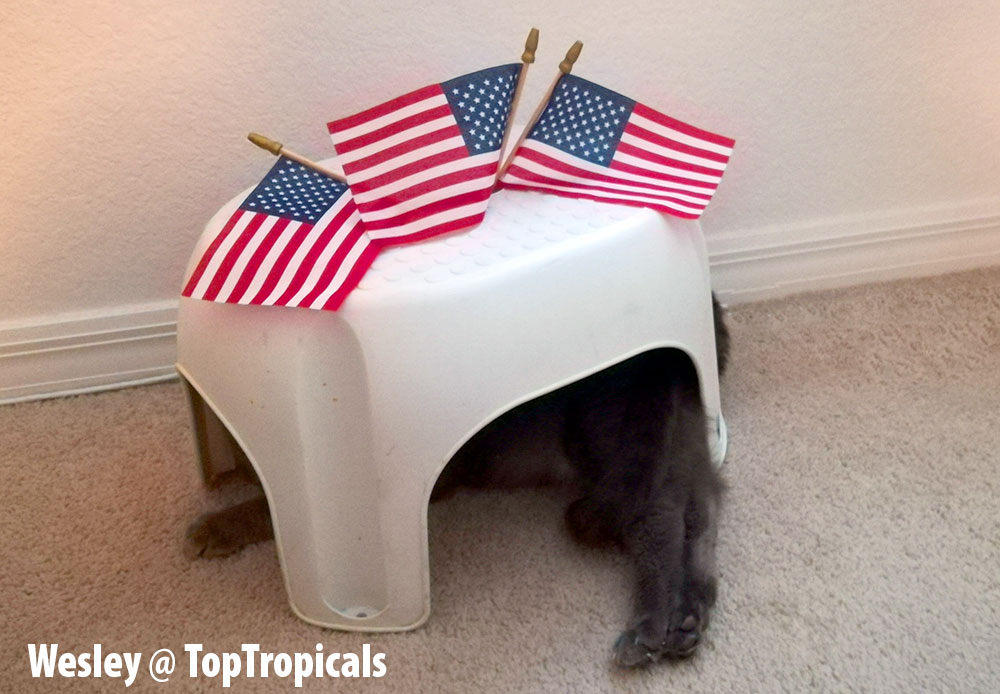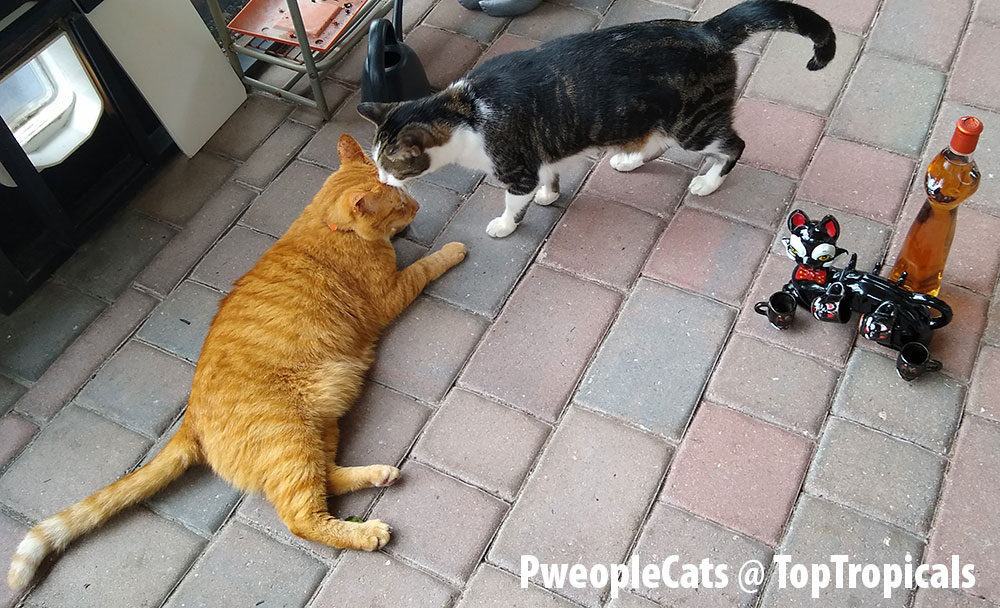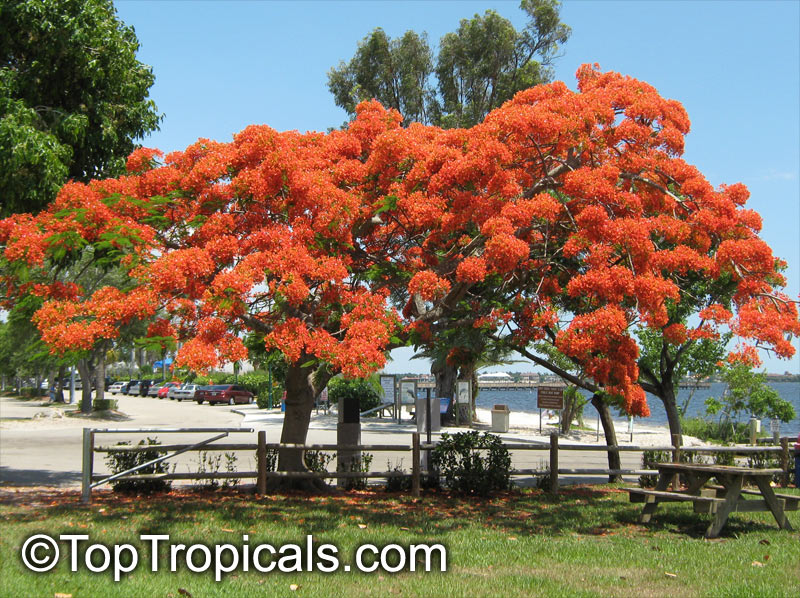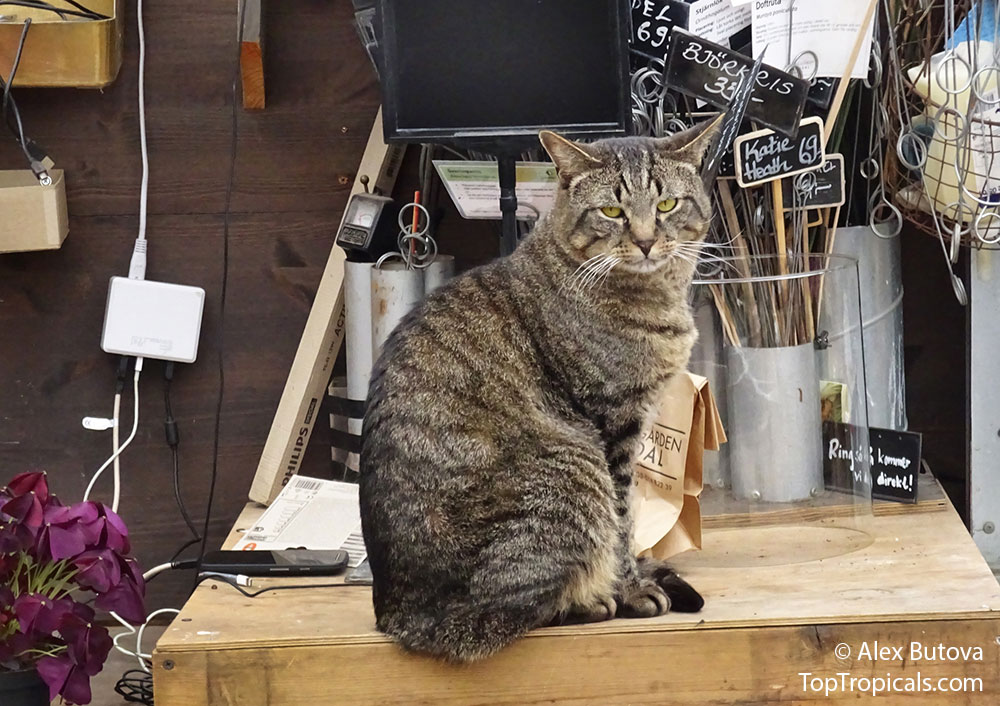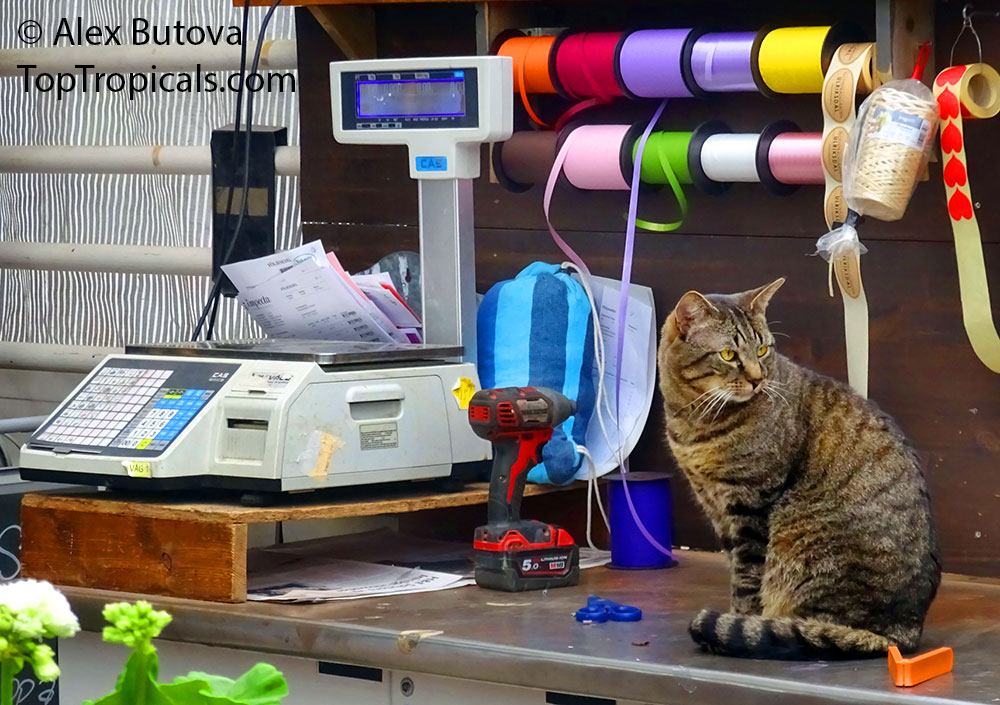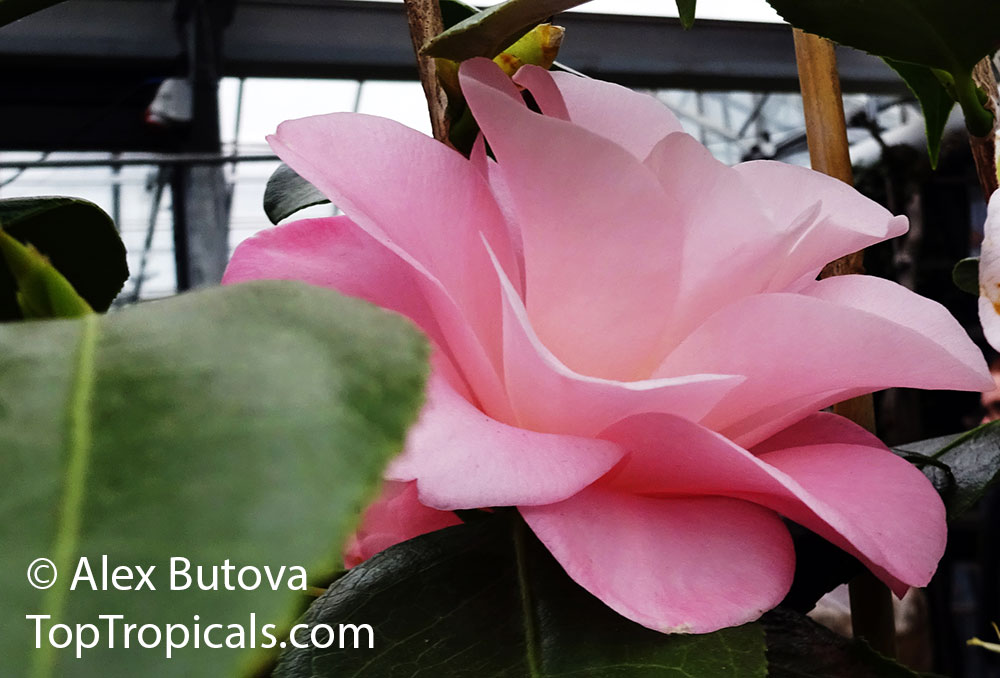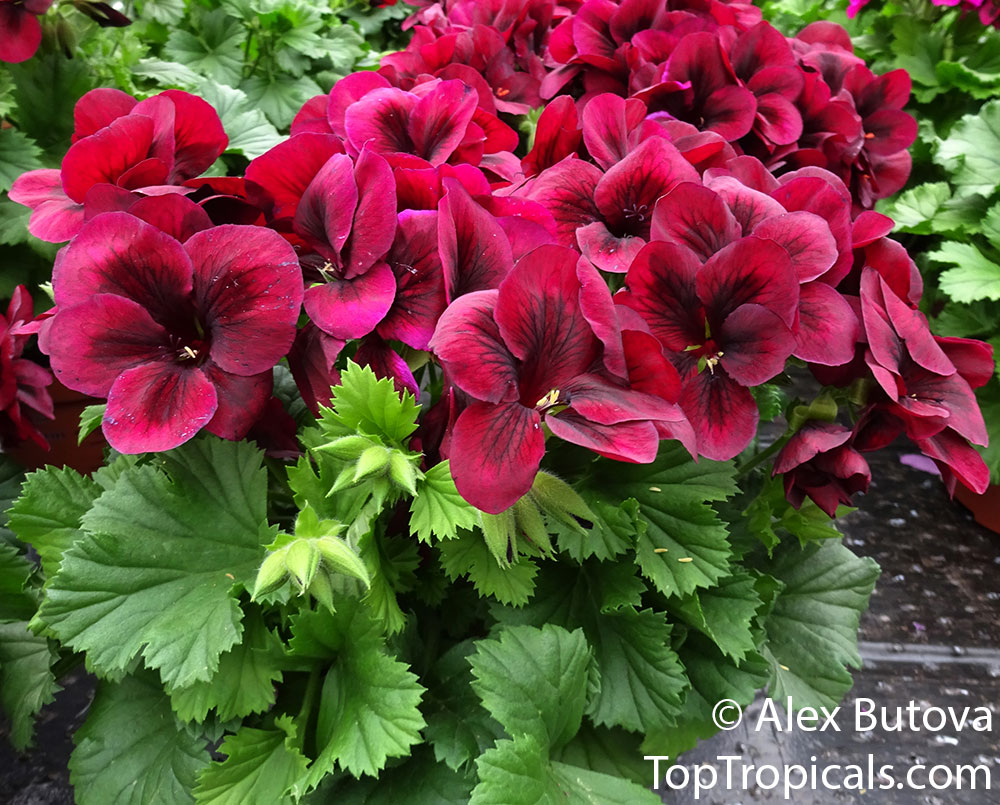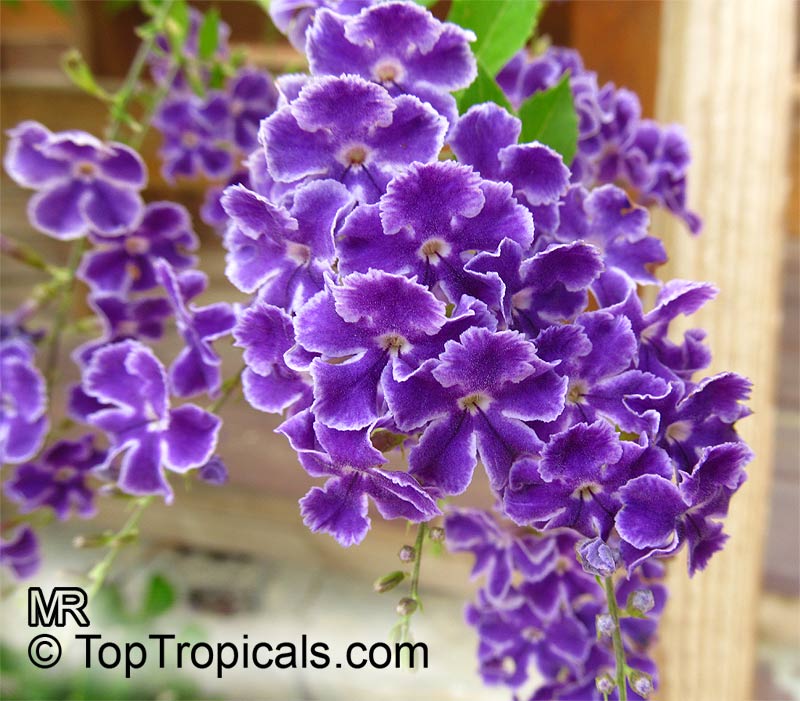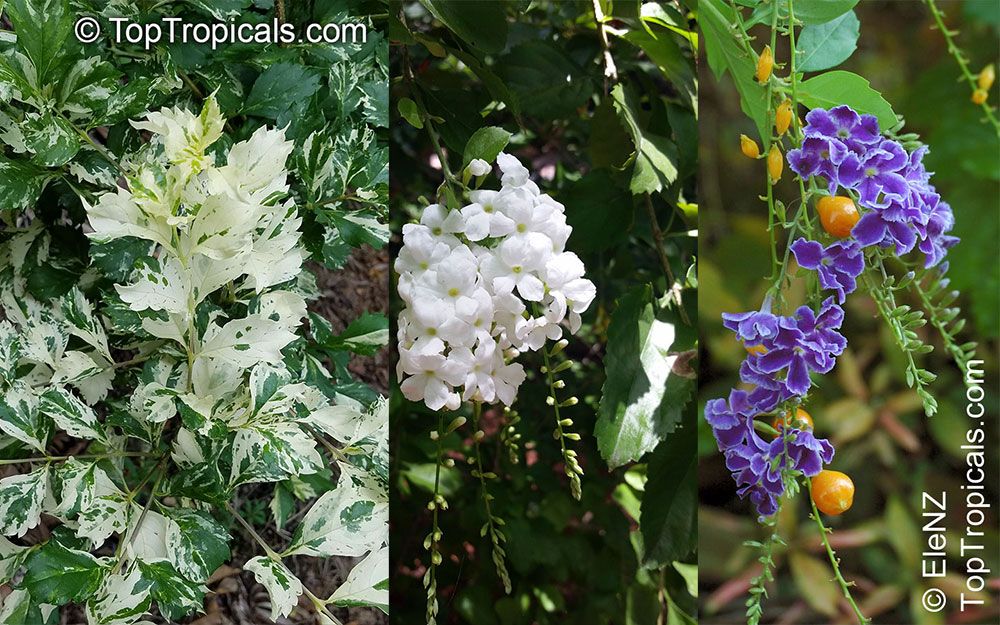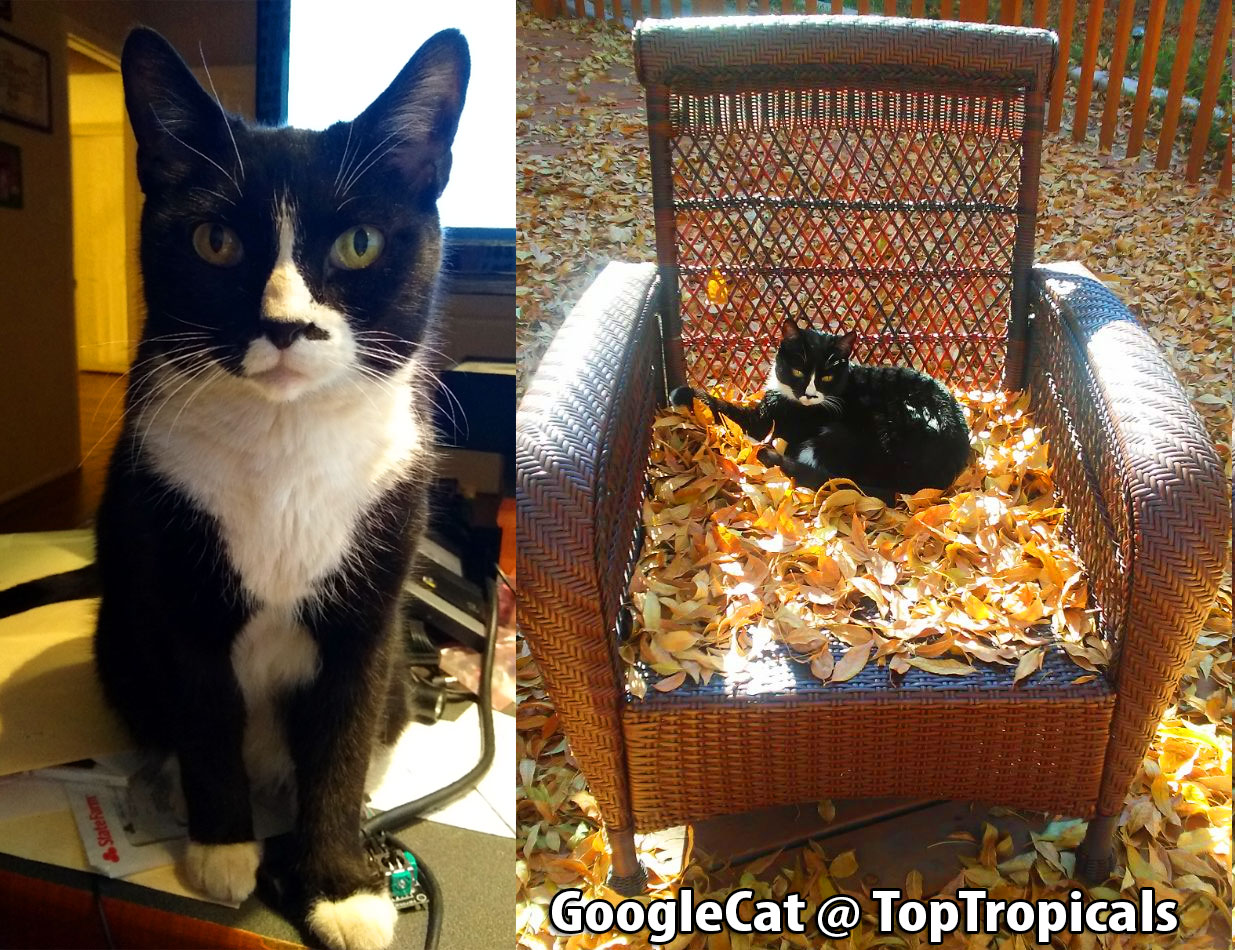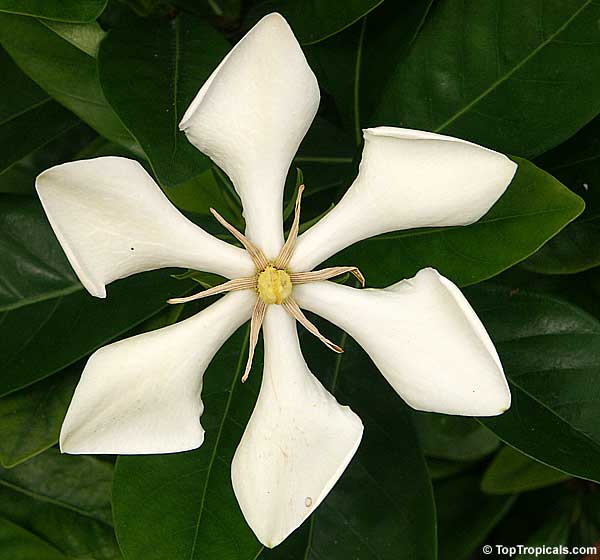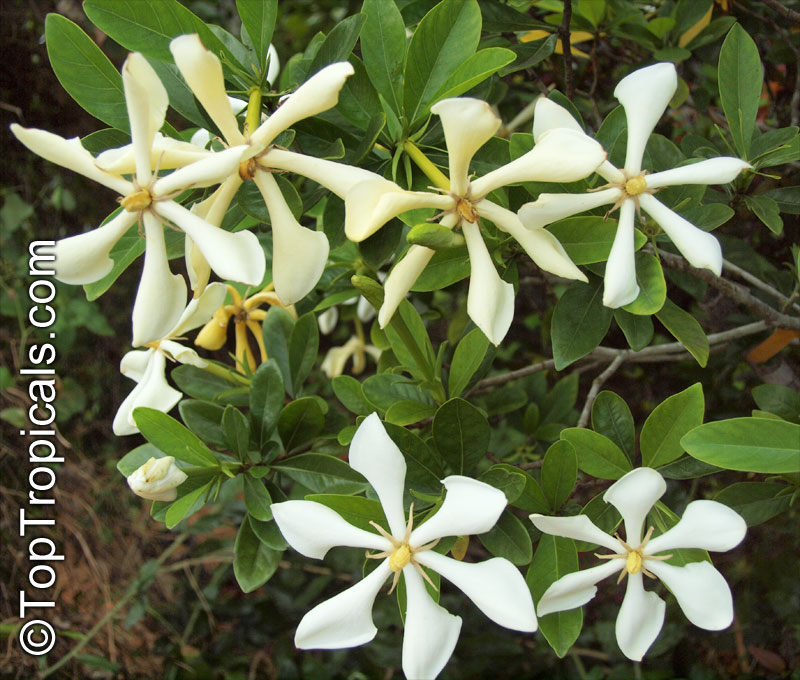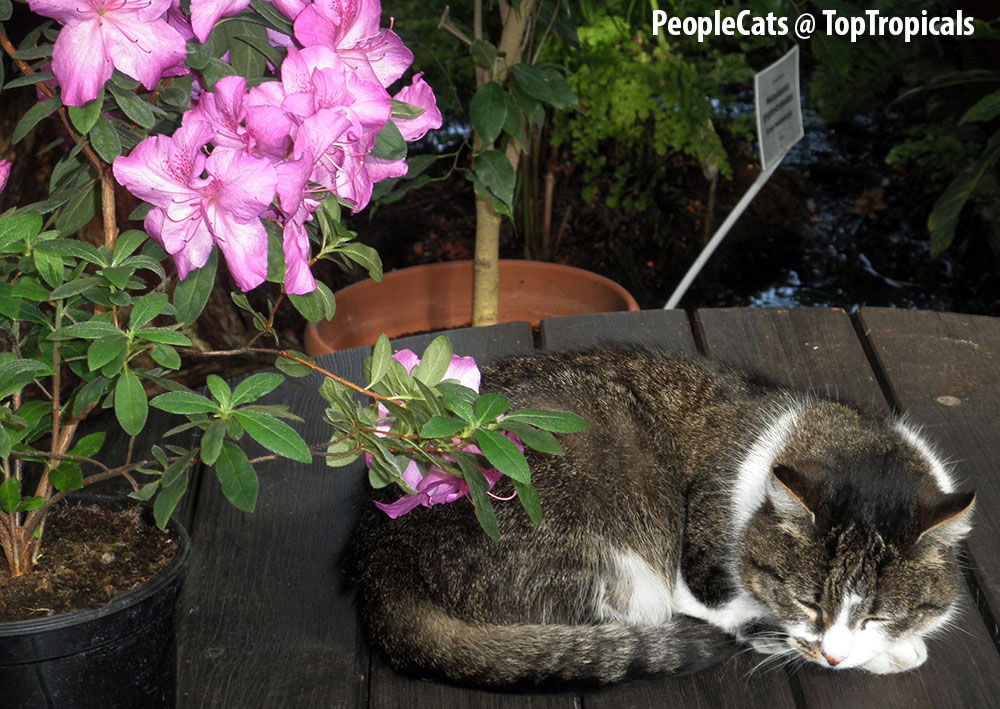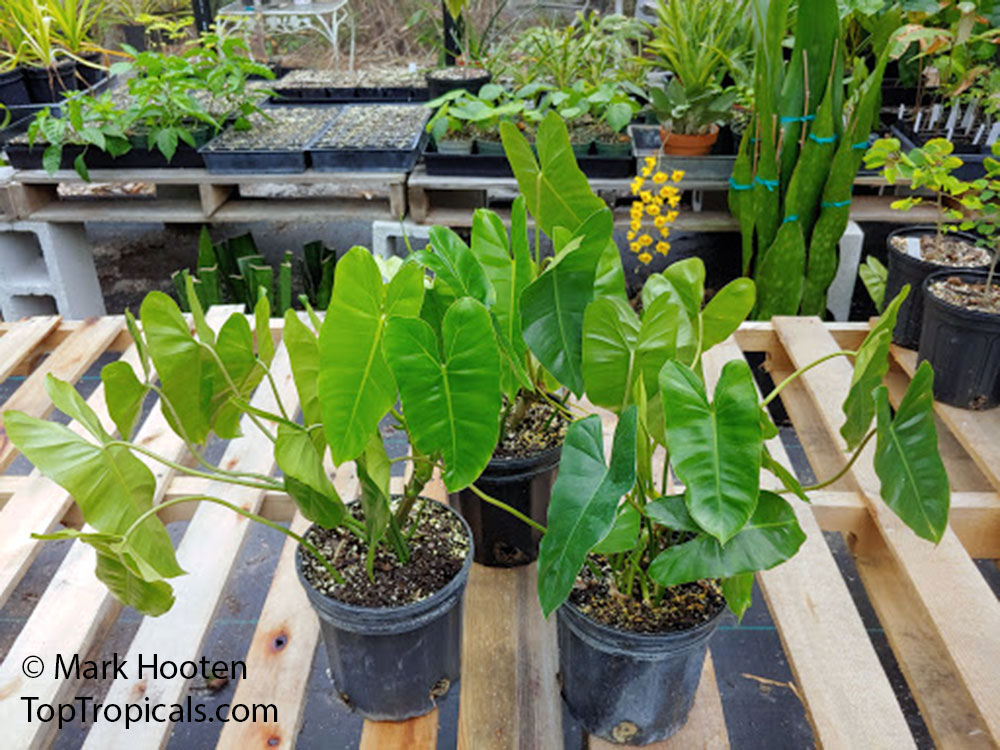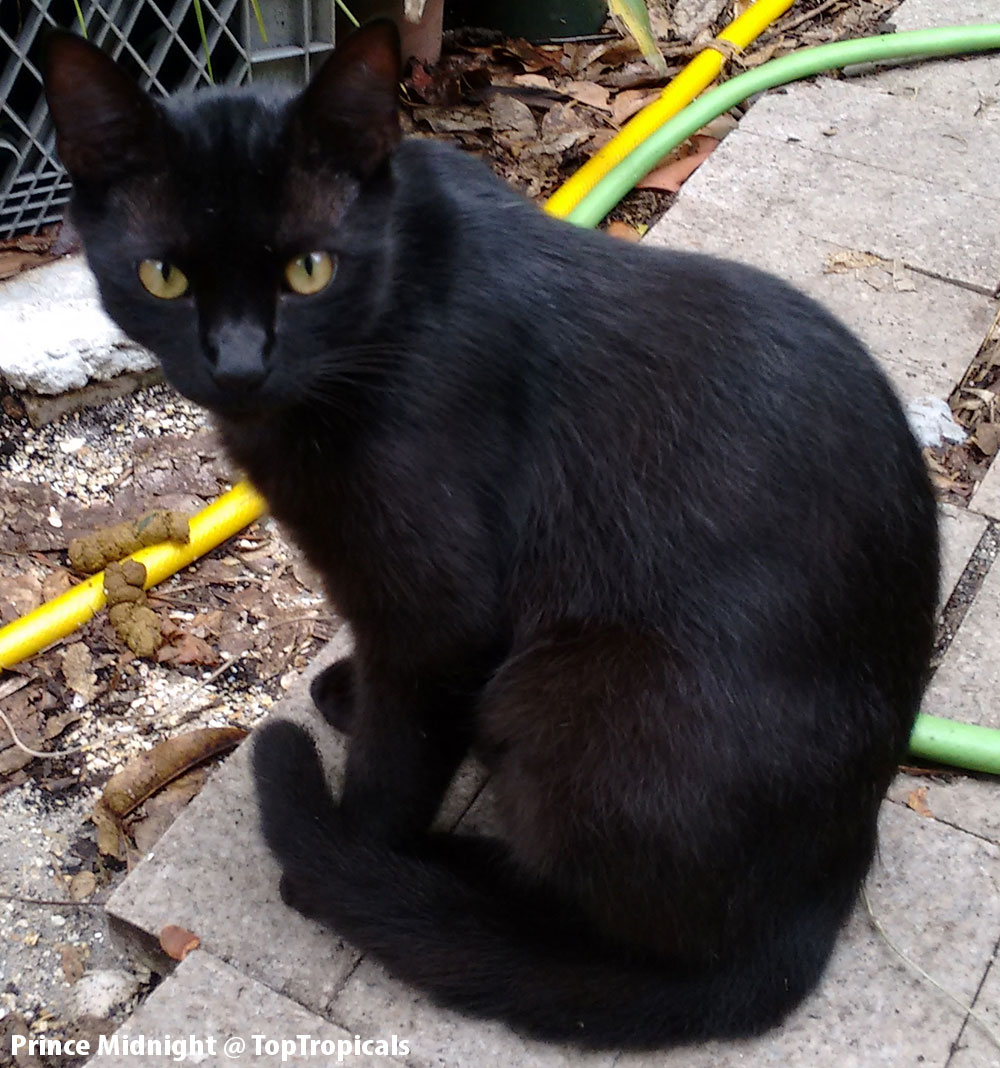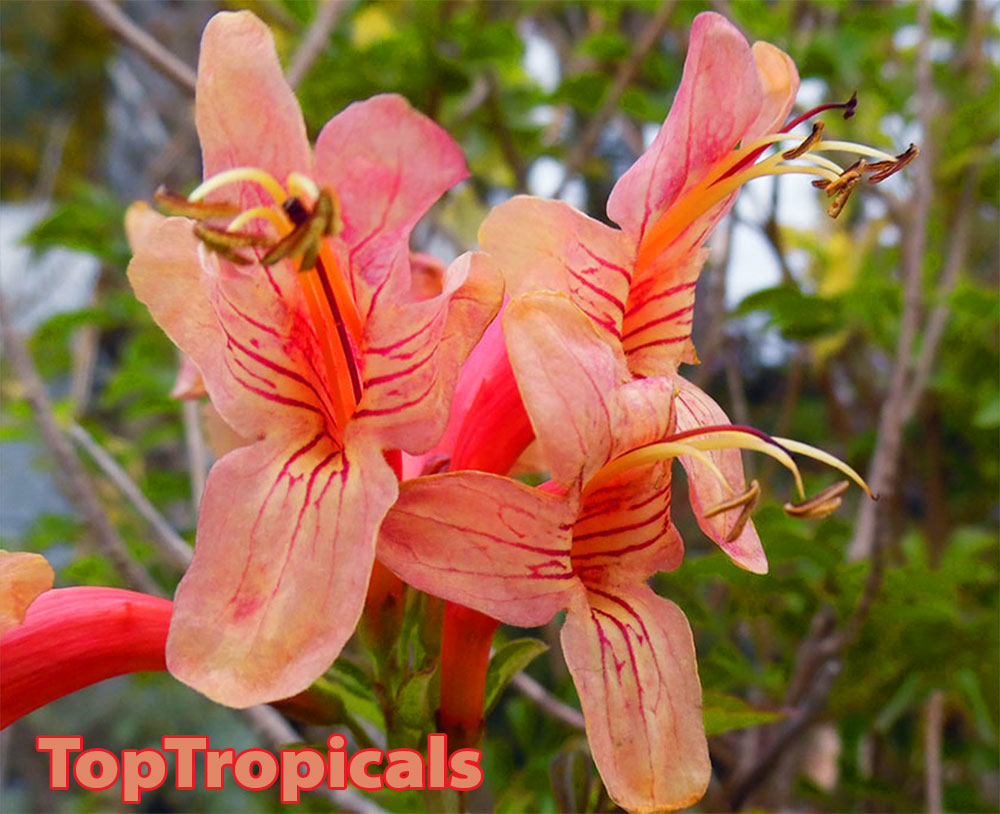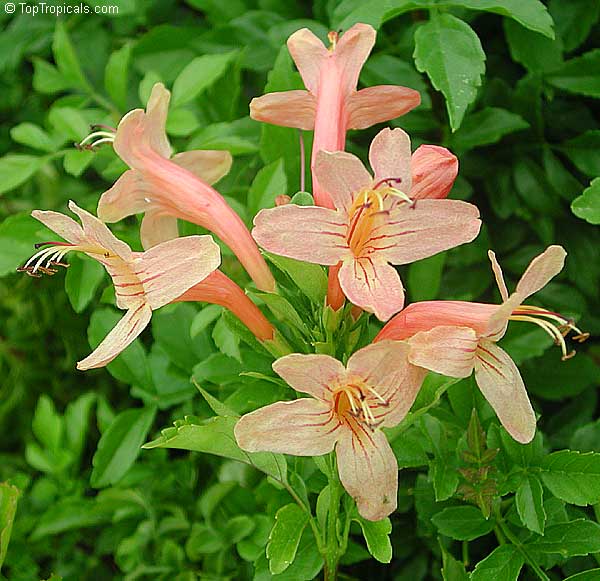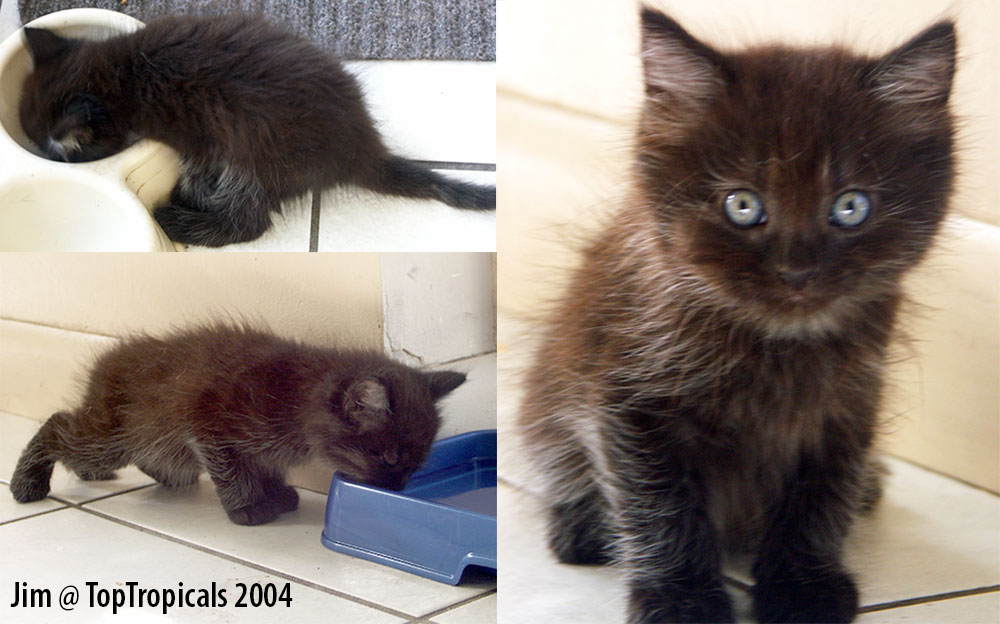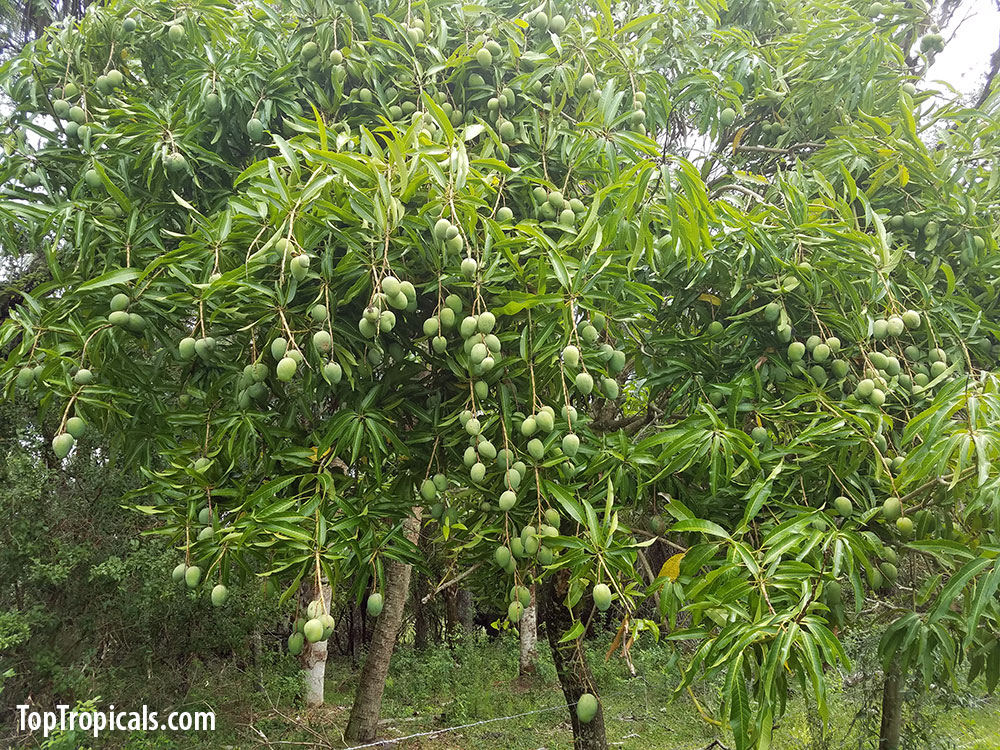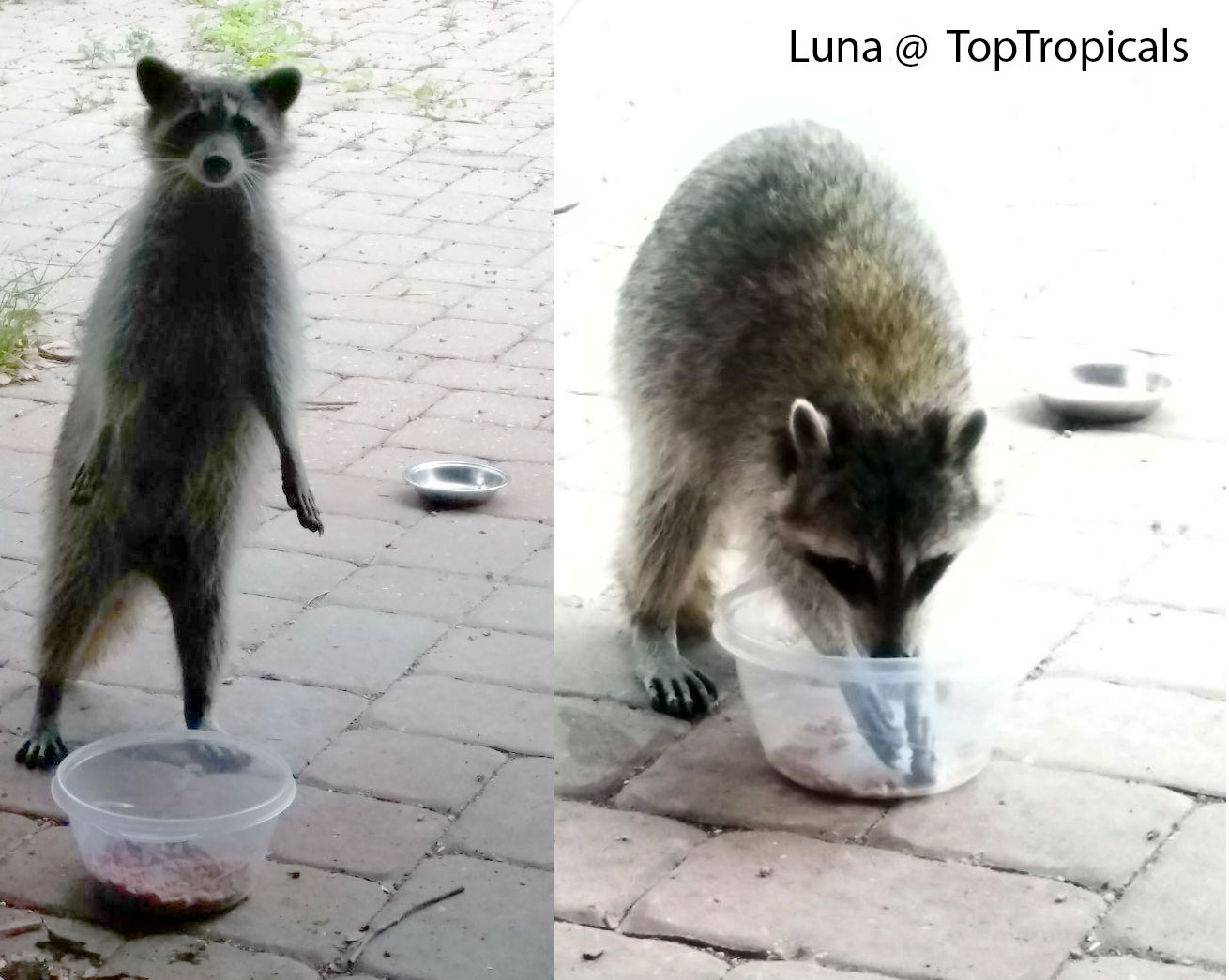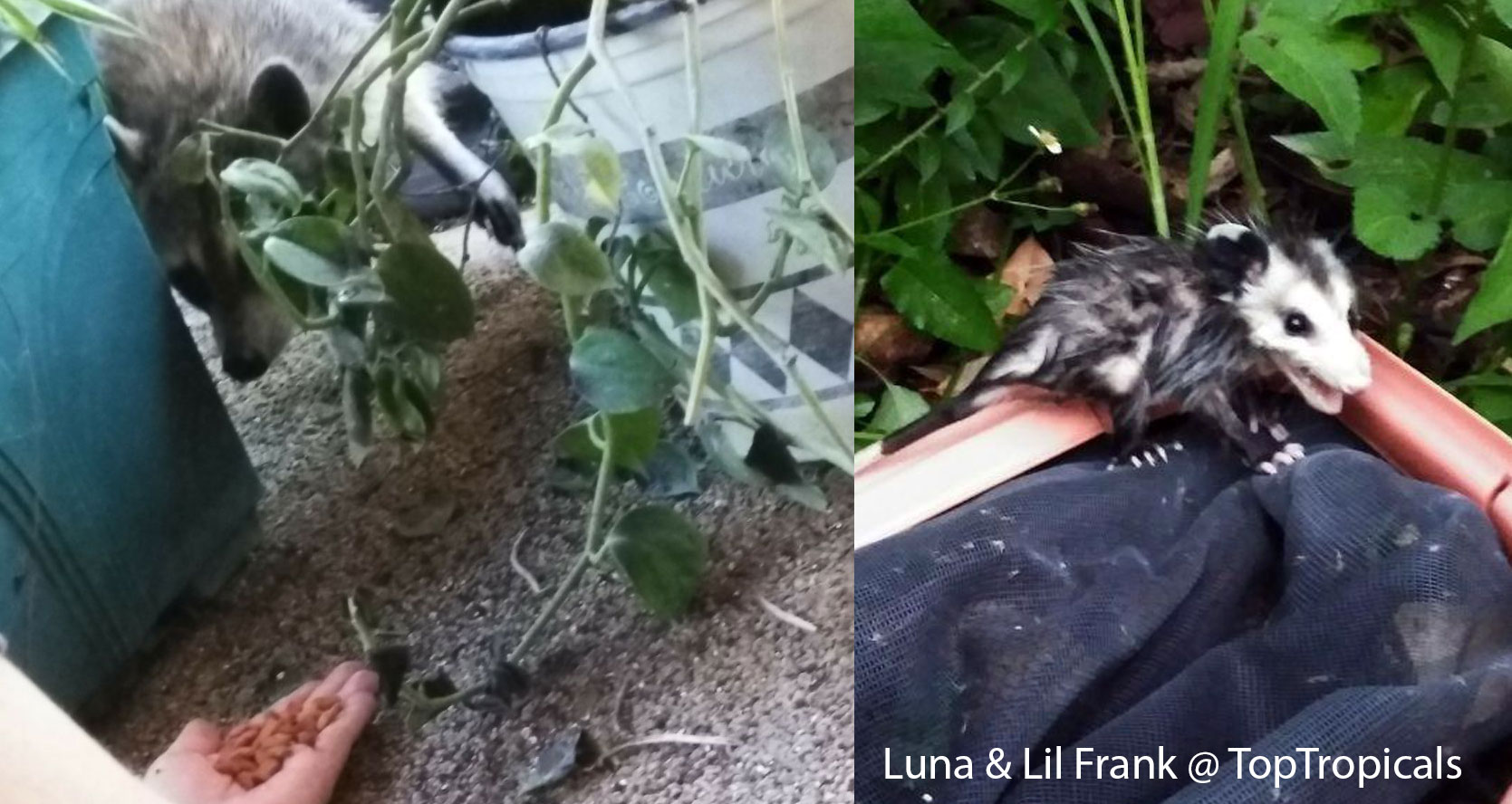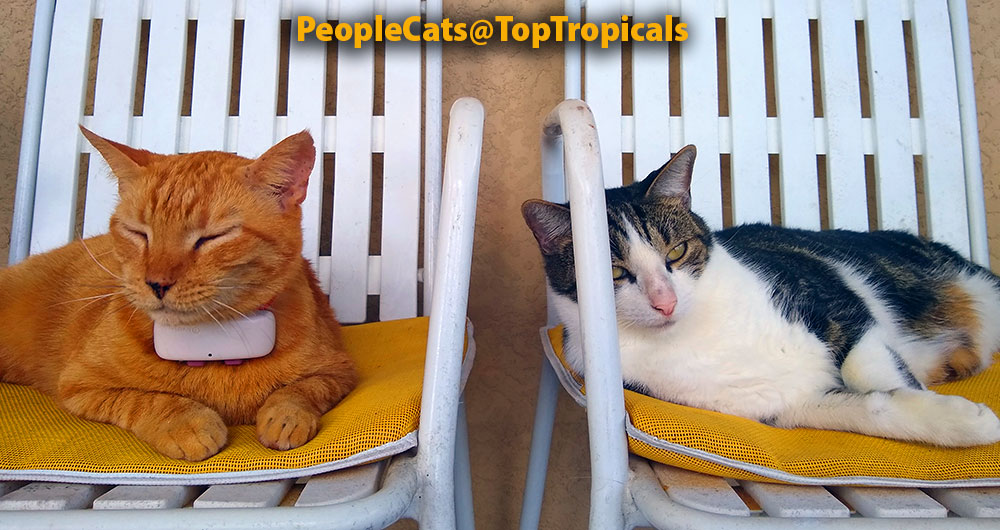Garden Blog - Top Tropicals
Date:
Meet PeopleCats of TopTropicals. Cat of the day: Russian Blue - a true Angel
Many customers ask if they can adopt one of our PeopleCats. Sorry, the answers is no, because they are not only members
of our family, but also valuable employees who help us around the nursery:
to grow and ship plants, work on construction projects, and even take care of
property security. However, we can give some advise on what kind of cats make
the most purrrfect companions.
If you are searching for a pet with a heart of an Angel, who is gentle and
loving, the Russian Blue is the perfect purrson to add to your family. The
Russian Blue breed comes in beautiful shades of gray, varying from a light
shimmering silver to a darker, slate gray. Their short, dense coat has been the
hallmark of the Russian breed for more than a century. It is a naturally
occurring breed originated in the port of Arkhangelsk in Russia. They are also
sometimes called ArchAngel Blues. It is believed that sailors took Russian Blues
from the Archangel Isles to Great Britain and Northern Europe in the
1860s.
Throughout the history of Top Tropicals, we've had many Russian Blues,
including famous Wesley, Marco, and King that are loved by everyone.
In the photo: TopTropicals editor Alex with Gosha - manager of the Puppet Kingdom, Museum of Dolls in Preili, Latvia
In the photo: King is checking security of the new window
TopTropicals PeopleCat Club and Zoo
Thank you for supporting us in helping PeopleCat Community!
Make
your kind donation today and receive a surprise gift from us! Every little
bit helps. Thank you and God bless you and your pets!
Date:
Grafted fruit trees for Hawaiian gardens
Q: Aloha guys, I purchased a Diospyros digyna - Black Sapote grafted var. Black Beauty from you and am checking to make sure it will fruit by itself and not need both sexes. Also checking to see if the grafted atemoya I bought from you will fruit at sea level (where I'm at) or if I should give it to a friend who is above 1,000 so it will fruit? My grafted Maimi soursop is thriving! Looking at getting a grafted jackfruit from you all next.
A: Black sapote Black Beauty does not need a second plant to produce
fruit. Grafted trees should be flowering and setting fruit right away, or
sometimes on the second year.
Atemoya does not require high elevation for fruiting. It is a hybrid
Annona squamosa x Annona cherimola (A. cherimola species prefers higher
elevation) so Atemoya is usually is happy at sea level.
Congratulations with your Soursop! It should be really happy in your location.
As for grafted Jackfruits, this is the list of varieties we usually carry. Since many of them are very rare, they sell out quickly once we get new arrivals. If you are looking for a specific variety, I strongly recommend to add it to your wishlist (click on "Notify me when available") and you will receive email from us as soon as we have it in stock, so you will be the first one to know about it!
Our favorite Jackfruit varieties (and also hot sellers)
Black Gold
Borneo
Red
Crispy
Dang
Rasimi
We also suggest to get a Kwai Muk (while we still have it!) - the most delicious fruit, and it should do well in Hawaii.
Date:
Meet PeopleCats of TopTropicals. Cat of the day: Wesley's Independence
Wesley is the biggest cat at TopTropicals. He weighs almost 30 pounds.
He believes in good
nutrition and never sweats the small stuff.
In spite of being the Biggest Purrrson, Wesley is not exactly fearless...
Everyone knows that there are two things Wes is afraid of - a thunder, and...
a doorbell. When someone rings the doorbell, Wesley zooms into the nearest
closet faster than a lightning and stays there until dark. No more than one
visitor per day for him!
In the photo below: Wes is celebrating his Independence - "It's better be safe than sorry!"
TopTropicals PeopleCat Club and Zoo
Thank you for supporting us in helping PeopleCat Community!
Make
your kind donation today and receive a surprise gift from us! Every little
bit helps. Thank you and God bless you and your pets!
Date:
Plants like to snack!
How to feed Poinciana tree
(and other tropical flowering trees)
Q: We purchased a Royal Poinciana tree from TopTropicals not too long ago and we gradually gave it more sun until finally we were able to plant it in direct sunlight where it's been for a week or so. Rain has been sporadic lately so I'm giving it a little bit of water every day. It seems to be doing fine. I do have a question about whether the leaves are as green as they should be? I read online that I should fertilize it with gardenia / ixoria fertilizer in March, June, and October. I looked on homedepot.com but didn't really find anything that goes by that name. Would fertilizer help? Can you suggest a fertilizer?
A: Your Poinciana tree looks pretty healthy and happy,
congratulations with a great job!
Traditional (old-school) fertilizer recommendations usually suggest feeding
a plant 2-3 times a year with a slow-release fertilizer. And although a
plant will benefit from any fertilizer application (extra food is always good),
however, for the best results, faster growth, sooner and more profuse
blooming, your should use complete plant nutrition products - liquid fertilizers (see
why liquid
fertilizers are better than dry).
Here is an example. Some people eat a big heavy meal once a day which we
all know, is not very healthy. Other people eat balanced food more frequently
but in smaller portions - this is always the best way to go.
From this point, plants prefer SNACKING - frequent feeding, but with less
concentrated, mild and balanced nutrients.
For your beautiful Poinciana tree (and other flowering plants), we suggest
the following nutrition program:
1) SUNSHINE Megaflor - Bloom Nutrition Booster - you may use this fertilizer as frequent as with every watering, it won't burn the roots, and will provide a complete nutrition for all plant needs throughout the year. You can continue fertilizing with Megaflor even during winter time. Sunshine Megaflor will help you to keep the plant healthy, vigorous, and resistant to stress and diseases. It turns leaves green and makes the plant strong so it will start flowering sooner for you.
2) Tropical Allure - Smart-Release Booster. Apply it once a month during hot season only (in Florida - from March to November).
Date:
Meet PeopleCats of TopTropicals. Cat of the day: Anders from the King's Palace
We receive many letters from customers who enjoy our Cat of the Day column, including those who want to share their cat stories with us! Today's guest in PeopleCat studio -
Cat Anders. Anders lives in Stockholm. He is a manager of a Garden
Center located in one of the King's properties - Palace Ulriksdal. He has so many beautiful flowers in
stock! Lots of orchids, camellias, and showy colorful annuals.
Anders' favorite spot is to sit by the cash register where he can closely
monitor every payment transaction. Sometimes he takes a walk around the
premises to take care of security issues and to stay on top of his inventory
control. During lunch time Anders visit Flower Cafe nearby, to make sure visitors'
dogs behave properly... Yes, dogs and cats are welcomed in!
TopTropicals PeopleCat Club and Zoo
Thank you for supporting us in helping PeopleCat Community!
Make
your kind donation today and receive a surprise gift from us! Every little
bit helps. Thank you and God bless you and your pets!
Date:
Plant of the Month: Golden Dewdrop - Duranta erecta
Stevie's Pick: what's in bloom?
Our exotic plant grower Steven Gowdy is featuring the most interesting plants he discovers and recommends today while working in TopTropicals greenhouses.
Duranta - Golden Dewdrop - is simply stunning with cascading flowers in
abundance. Either it has lavender, blue, or solid white flowers, it is a
sight to behold. The popular name Golden Dewdrop is inspired by the clusters of
bright orange-yellow berries that follow the flowers, in such quantities that
they often cause the slender branches to droop gracefully.
Duranta erecta blooms off and on all year and can be pruned to size as a
bush or a standard tree. If let go, it can grow up to 20 feet tall and wide.
Durantas are excellent butterfly and hummingbird attractors. They will
complement your tropical garden or a stand alone in your Southern landscape.
Great for providing a color contrast in the landscape, they are especially
well-suited as a bright-colored background or screening.
White
Golden Dewdrop has pure white flowers that appear in loose clusters, and
both berries and blossoms are often seen on a plant. This evergreen fast
growing shrub spreads and arches to 10 feet tall and wide and is great for live
hedges and covering fences and corners.
Variegated variety, also called Variegated Sky Flower, is grown for its summer flowers, and very showy
leaves that are dark green with bright white variegation and creamy-yellow
margins around the one inch long serrated leaves.. In the summer, cascading
clusters of blue tubular flowers appear followed by wonderfully contrasting
orange-yellow berries.
In mild climates, Durantas can be in flower nearly year round with flowers
and fruit appearing at the same time. It does best in full sun with frequent
deep watering and is pretty hardy, to about 20-25F. It is a good choice for
espaliers, as a small tree or large bush; all forms benefit from frequent
selective pruning. Prune back in late-winter to encourage a more compact shape
and strong flush of fresh spring foliage. Requires moderate watering in a
well-drained soil.
Date:
Meet PeopleCats of TopTropicals. Cat of the day: Google the Cat says Happy Fathers Day!
Google the Cat is joining Fathers Day celebration as a Founding Father of TopTropicals (along with Jim the Founder). Google just turned 13 years old - pretty senior age for a cat, and although he is still full of energy (and Brainpower), he spends most of his day managing the business, setting the goals, and knowing everything. This is Because, and this is Why - he is the Google!
TopTropicals PeopleCat Club and Zoo
Thank you for supporting us in helping PeopleCat Community!
Make
your kind donation today and receive a surprise gift from us! Every little
bit helps. Thank you and God bless you and your pets!
Date:
The easiest to grow Gardenia
Gardenia (Kailarsenia) vietnamensis
by Onika Amell, tropical plant expert
One of the easiest and hardiest Gardenias in our collection is the Vietnamese Gardenia. This plant is much easier to grow than many other Gardenias. It can handle overly moist soils much better, is quite drought tolerant once established and has a high resistance to the typical Gardenia woes. It is hands down also the most cold hardy Gardenia in our collection!
CONTINUE READING >>
Date:
Meet PeopleCats of TopTropicals. Cat of the day: Ditta - the Botanical Cat
Ditta lives in Botanical Garden of
Riga, Latvia. Our columnist Alex Butova has been writing about that garden a lot and posted
numerous plant photos in our Catalog; now it is time to introduce its PeopleCats!
Ditta is the Boss of Riga Botanical Garden. She owns the security room and
watches her premises. Ditta is in charge of all events and exhibits of the
Garden, and her favorite spot is the Rose Garden.
TopTropicals PeopleCat Club and Zoo
Thank you for supporting us in helping PeopleCat Community!
Make
your kind donation today and receive a surprise gift from us! Every little
bit helps. Thank you and God bless you and your pets!
Date:
Philodendron Burle Marx
by Onika Amell, tropical plant expert
Are you looking for an exceptional ground cover that is incredibly easy to grow? Burle Marx is a low growing variety of Philodendron. This plant works exceptionally well in mass plantings as they develop runners which creates that beautiful tropical feel and look so many gardeners desire. You can also create wonderful borders with this Philodendron. Plant them in your favorite container and watch them cascade beautifully over time. Give them a tree and they will climb. This plant is almost prehistoric looking with jungle-green, shiny, leathery, elongated heart shaped leaves on reddish stems...
CONTINUE READING >>
Date:
PeopleCats of TopTropicals. Cat of the day: Midnight - Prince from Bombay
...Prince Midnight was adopted at 6 weeks from a large family of Bombay cats from a nearby neighbor. At the time we didn't realized they were Bombays, just that the entire group were pure black with gold eyes. It was later that we realized he had all the traits of a Bombay including not a speck of white, the gold eyes and the facial characteristics, and even an obscure trait known to them: a tendency toward stuffy nose, which has always come and gone, sounding like a mild snore, even when awake. He is going on 17...
CONTINUE READING >>
TopTropicals PeopleCat Club and Zoo
Thank you for supporting us in helping PeopleCat Community!
Make
your kind donation today and receive a surprise gift from us! Every little
bit helps. Thank you and God bless you and your pets!
Date:
Plant of the Month: Tecomaria capensis Apricot
Stevie's Pick: what's in bloom?
Today we are starting a new column about the most spectacular specials that are in bloom or in fruit today. Our exotic plant grower Steven Gowdy will spotlight the most interesting plants he discovers and recommends today while working in TopTropicals greenhouses.
Summer is in full bloom and everyone is wanting dirt under there nails
after being quarantined for two months! Enjoy warm tropical breezes with
Apricot flowers of this showy African Tecomaria in your garden.
Tecomas and Tecomarias make a wonderful splash of color in any garden,
and apricot is no exception. Tecomaria Apricot has pretty unusual color of
flowers, ranging from bright apricot color to light-salmon. Ever blooming in
warmer climates, it can grow 3-4 feet high and a whopping 4-5 feet wide. In
addition to its beautiful flowers, this plant has many medicinal benefits. An
easy fast growing addition to any landscape, it is a great hummingbird and
butterfly attractor. It is pretty cold hardy and can tolerate light frost which
is a great benefit for gardeners living in subtropical climates with cooler
winters.
Date:
PeopleCats of TopTropicals. Cat of the day: Jim, Happy 16th Birthday!
A few days ago Jim celebrated his 16th birthday. He is our oldest Purrrson.
We are extending this opportunity to wish him to stay Happy, in Good Health
and Full Body - the way he always has been! And you know what is his secret
of healthy and wealthy life?
Eat well and don't sweat the small stuff!
Photo above: Jim in 2004 - eating well
2 photos above: Jim today - shaved and gray-haired, but still eating well!
TopTropicals PeopleCat Club and Zoo
Thank you for supporting us in helping PeopleCat Community!
Make
your kind donation today and receive a surprise gift from us! Every little
bit helps. Thank you and God bless you and your pets!
Date:
How to prevent mango fruit drop
Q: My mature mango tree is fully grown 15 yrs old and each year it fully blooms, sometimes twice. Shortly thereafter, all the baby mangos and flowers fall off providing no mangos for the season. I have tried fertilizing, spraying the tree for fungus or other insects, to no avail. I give up, any suggestions?
A: Dropping fruit in pretty common issue with mango trees. There
may be several reasons, or a combination of reasons.
1. Fungal disease (anthracnose), and/or powdery mildew. To avoid
fungal disease problems, spray your tree when it just begins to form the flower
spikes. Treat foliage with Copper fungicide. There is also another
one, very effective for anthracnose: Thiophanate methyl.
2. Inadequate nutrition. Feed your tree with a combination of
granulated fertilizer Mango-Food, liquid booster SUNSHINE Mango Tango and micro-elements Sunshine Honey and Sunshine Superfood
Check out pictures of our mango tree problems that were fixed within a month by
using Sunshine Boosters.
3. Too much rain or heavy dew during blooming and fruit set (see 1 -
use preventive treatment for fungus)
4. Cold. Sometimes the cause of premature fruit drop is from the
cold weather during bloom and fruit set. Usually the most affected varieties are
the early bloomers including Glenn, Haden. The cold damages the developing
embryo in the seed. The fruit starts to develop but because of ethylene gas
given off by the damaged embryo, the fruit is triggered to drop before
maturity. To see if cold temperature was the cause for your fruit dropping, cut open
the fallen fruit. Even if there is a small speck of brown in the seed,
that's enough damage to stop fruit development.
To learn more how to care for your mango, please read this publication.
Date:
People of TopTropicals. Pets of the day: Luna, Queen of Night and Lil Frank the Possum
We had a friend over for dinner, lovely Mrs Mom Luna the Raccoon. She
had a bunch of her baby raccoons! This is the second Raccoon of TopTropicals
(see our previous visitor - Raccoon Charity).
Then we discovered a little opossum that had a night time swim... We helped
him out in the morning using a pool net. Little Frank, apparently, is our
Possum Pete's grandson.
All PeoplePets were fed with cat food and received a big portion of
Love!
Luna is learning how to eat out of hand... and Lil Frank just got out of the pool.
Possum Pete - grandpa of Lil Frank, guarding the cat food at night
TopTropicals PeopleCat Club and Zoo
Thank you for supporting us in helping PeopleCat Community!
Make
your kind donation today and receive a surprise gift from us! Every little
bit helps. Thank you and God bless you and your pets!
